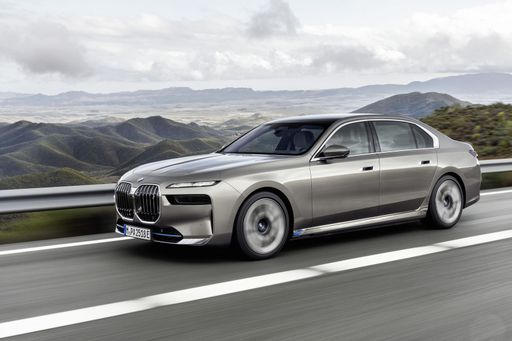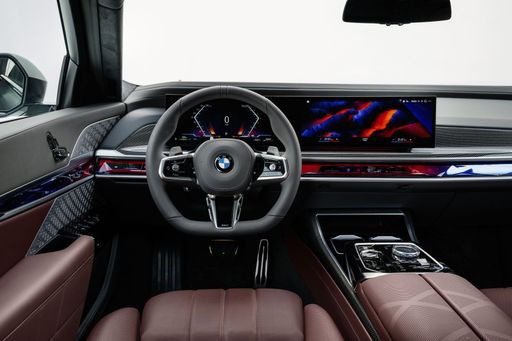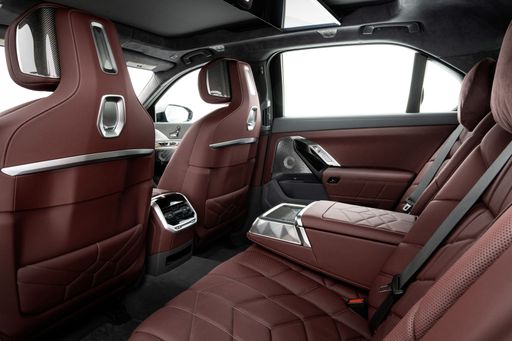Alfa Romeo Junior vs BMW i7 – Which one offers the better deal?
Compare performance, boot capacity, efficiency and price at a glance.
Find out which car is the better choice for you – Alfa Romeo Junior or BMW i7?
Costs and Efficiency:
When it comes to price and running costs, the biggest differences usually appear. This is often where you see which car fits your budget better in the long run.
Alfa Romeo Junior has a significantly advantage in terms of price – it starts at 25700 £, while the BMW i7 costs 99200 £. That’s a price difference of around 73500 £.
In terms of energy consumption, the advantage goes to the Alfa Romeo Junior: with 15.10 kWh per 100 km, it’s distinct more efficient than the BMW i7 with 18.50 kWh. That’s a difference of about 3.40 kWh.
As for range, the BMW i7 performs noticeable better – achieving up to 624 km, about 214 km more than the Alfa Romeo Junior.
Engine and Performance:
Power, torque and acceleration are the classic benchmarks for car enthusiasts – and here, some clear differences start to show.
When it comes to engine power, the BMW i7 has a significantly edge – offering 659 HP compared to 280 HP. That’s roughly 379 HP more horsepower.
In acceleration from 0 to 100 km/h, the BMW i7 is convincingly quicker – completing the sprint in 3.70 s, while the Alfa Romeo Junior takes 5.90 s. That’s about 2.20 s faster.
In terms of top speed, the BMW i7 performs to a small extent better – reaching 250 km/h, while the Alfa Romeo Junior tops out at 206 km/h. The difference is around 44 km/h.
There’s also a difference in torque: BMW i7 pulls decisively stronger with 1100 Nm compared to 345 Nm. That’s about 755 Nm difference.
Space and Everyday Use:
Cabin size, boot volume and payload all play a role in everyday practicality. Here, comfort and flexibility make the difference.
Both vehicles offer seating for 5 people.
In curb weight, Alfa Romeo Junior is significantly lighter – 1380 kg compared to 2595 kg. The difference is around 1215 kg.
In terms of boot space, the BMW i7 offers a bit more room – 500 L compared to 415 L. That’s a difference of about 85 L.
When it comes to payload, BMW i7 distinct takes the win – 535 kg compared to 420 kg. That’s a difference of about 115 kg.
Who wins the race?
The Alfa Romeo Junior proves to be has a very small edge and therefore becomes our DriveDuel Champion!
Alfa Romeo Junior is the better all-rounder in this comparison.
 @ Alfa Romeo / Stellantis Media
@ Alfa Romeo / Stellantis Media
Alfa Romeo Junior
Alfa Romeo Junior
The Alfa Romeo Junior captures the essence of Italian design with its sleek lines and compact dimensions, making it an icon of elegance and performance. With a spirited driving experience and a charming retro aesthetic, it appeals to enthusiasts and casual drivers alike. This delightful car embodies the brand's rich heritage while remaining a fun and engaging option for those seeking a unique automotive experience.
details @ Alfa Romeo / Stellantis Media
@ Alfa Romeo / Stellantis Media
 @ Alfa Romeo / Stellantis Media
@ Alfa Romeo / Stellantis Media
 @ Alfa Romeo / Stellantis Media
@ Alfa Romeo / Stellantis Media
BMW i7
The new BMW i7 epitomises luxury and innovation, seamlessly blending advanced technology with elegant design. Its interior offers an unparalleled experience, with premium materials and cutting-edge features that create a tranquil yet engaging atmosphere for both driver and passengers. The i7's performance is both dynamic and efficient, demonstrating BMW's commitment to sustainable driving without compromising on the exhilarating drive the brand is known for.
details @ BMW Group Press
@ BMW Group Press
 @ BMW Group Press
@ BMW Group Press
 @ BMW Group Press
@ BMW Group Press
 @ BMW Group Press
@ BMW Group Press
 @ Alfa Romeo / Stellantis Media
@ Alfa Romeo / Stellantis Media
|
 @ BMW Group Press
@ BMW Group Press
|
|
|
|
Costs and Consumption |
|
|---|---|
|
Price
25700 - 41600 £
|
Price
99200 - 157000 £
|
|
Consumption L/100km
4.8 - 5.4 L
|
Consumption L/100km
-
|
|
Consumption kWh/100km
15.1 - 17.5 kWh
|
Consumption kWh/100km
18.5 - 20.8 kWh
|
|
Electric Range
344 - 410 km
|
Electric Range
559 - 624 km
|
|
Battery Capacity
0.4 - 51 kWh
|
Battery Capacity
101.70 kWh
|
|
co2
0 - 119 g/km
|
co2
0 g/km
|
|
Fuel tank capacity
44 - 45 L
|
Fuel tank capacity
-
|
Dimensions and Body |
|
|---|---|
|
Body Type
SUV
|
Body Type
Sedan
|
|
Seats
5
|
Seats
5
|
|
Doors
5
|
Doors
4
|
|
Curb weight
1380 - 1689 kg
|
Curb weight
2595 - 2770 kg
|
|
Trunk capacity
340 - 415 L
|
Trunk capacity
500 L
|
|
Length
4173 mm
|
Length
5391 mm
|
|
Width
1781 mm
|
Width
1950 mm
|
|
Height
1505 - 1538 mm
|
Height
1544 mm
|
|
Max trunk capacity
1205 - 1280 L
|
Max trunk capacity
-
|
|
Payload
390 - 420 kg
|
Payload
480 - 535 kg
|
Engine and Performance |
|
|---|---|
|
Engine Type
Electric, Petrol MHEV
|
Engine Type
Electric
|
|
Transmission
Automatic
|
Transmission
Automatic
|
|
Transmission Detail
Dual-Clutch Automatic, Reduction Gearbox
|
Transmission Detail
Reduction Gearbox
|
|
Drive Type
Front-Wheel Drive, All-Wheel Drive
|
Drive Type
Rear-Wheel Drive, All-Wheel Drive
|
|
Power HP
136 - 280 HP
|
Power HP
455 - 659 HP
|
|
Acceleration 0-100km/h
5.9 - 9.1 s
|
Acceleration 0-100km/h
3.7 - 5.5 s
|
|
Max Speed
150 - 206 km/h
|
Max Speed
205 - 250 km/h
|
|
Torque
230 - 345 Nm
|
Torque
650 - 1100 Nm
|
|
Number of Cylinders
3
|
Number of Cylinders
-
|
|
Power kW
100 - 207 kW
|
Power kW
335 - 485 kW
|
|
Engine capacity
1199 cm3
|
Engine capacity
-
|
General |
|
|---|---|
|
Model Year
2024 - 2025
|
Model Year
2022 - 2023
|
|
CO2 Efficiency Class
A, C, D
|
CO2 Efficiency Class
A
|
|
Brand
Alfa Romeo
|
Brand
BMW
|
What drive types are available for the Alfa Romeo Junior?
Available configurations include Front-Wheel Drive or All-Wheel Drive.
The prices and data displayed are estimates based on German list prices and may vary by country. This information is not legally binding.
